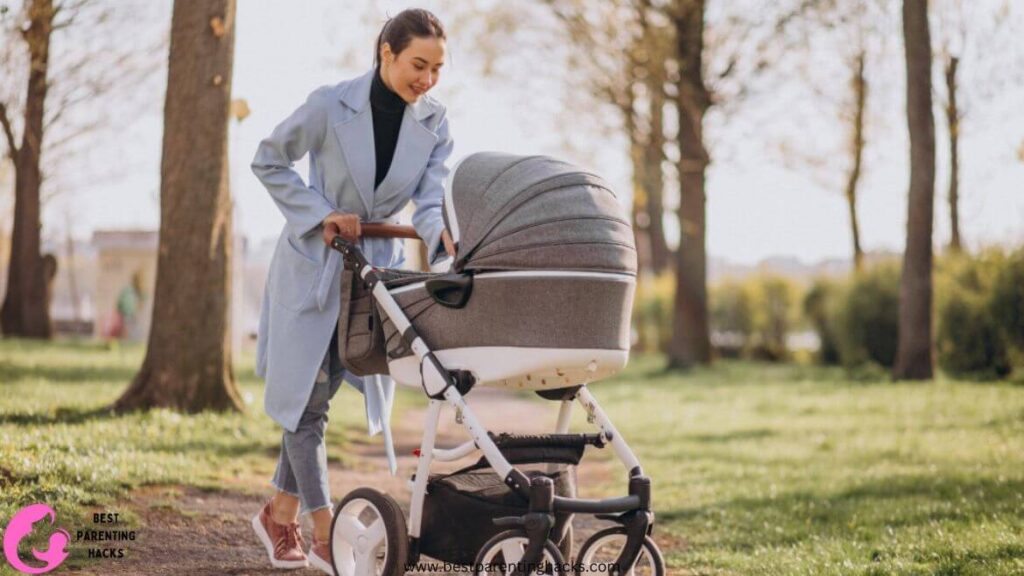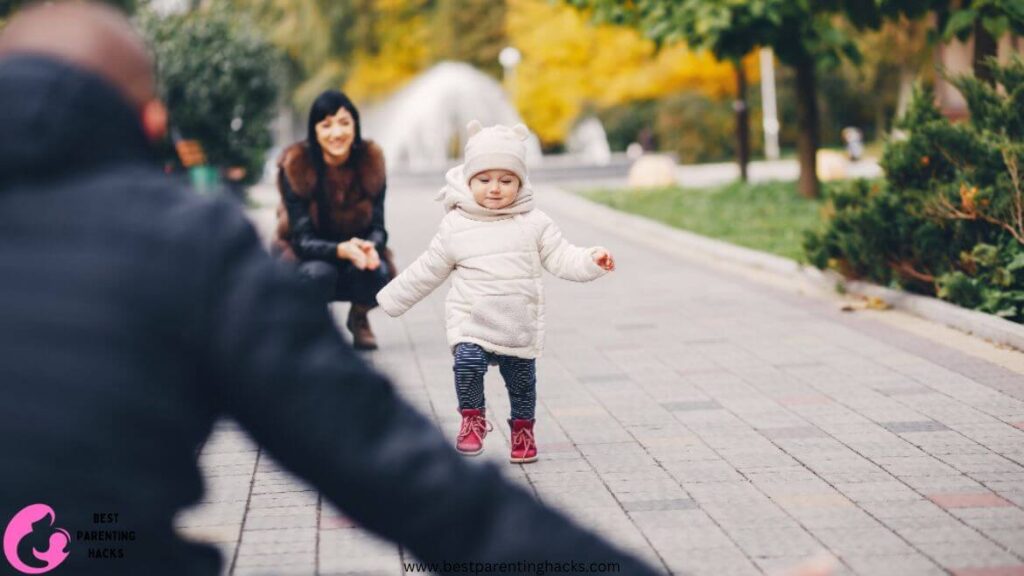Table of Contents
One of the most frequent worries I have as a parent is whether it’s safe to take my child for a walk when the weather becomes chilly, especially during the winter months. It is especially crucial to ask this question when the thermometer is close to 40 degrees. It’s a cool temperature, especially for a small child, but not quite freezing.
I remember thinking, “Is it too cold to take my baby out for a walk today?” on a beautiful fall morning when I first became a mom. I remember feeling the tiny coolness in the air as I looked out the window. My hunt for answers to this issue took me to parenting forums, pediatricians, and—above all—paying particular attention to my baby’s comfort and behavior.
It’s not only a matter of temperature when it comes to the quandary of whether to brave the 40-degree weather or stay indoors. It’s about striking a balance between your baby’s demand for stimulation and fresh air and your obligation to keep them safe and comfortable. I discovered during this voyage that there is no black-or-white response. It entails knowing several important things, such as how newborns feel the cold, how to dress appropriately, and how to identify their boundaries.
When I first started parenting, I was frequently—perhaps too—cautious. Every cough, every sneeze, every flushed face, every chilly fingertip—I worried about them all. However, as I grew in experience, I discovered that it’s important to believe both professional counsel and my own parental intuition. My kid taught me how to interpret the signs, so I could tell when they were having fun outside and when they were getting uncomfortable.
How should I recognize the baby’s reaction to cold?
Step 1: Recognizing Physical Limitations
Babies’ capacity to control their body temperature is restricted, especially in the case of newborns and infants. This is because, in comparison to adults, their bodies have a larger surface area to volume ratio, which causes faster heat loss. When I first became a mom, I saw how quickly my baby’s temperature seemed to change in chilly settings. Their small hands would occasionally get a bit whiter, and their cheeks would occasionally become chilly to the touch. The pediatricians I spoke with said that my child was losing body heat faster than a grown-up would.
Step 2: Observing Behavioral Cues
Infants use a variety of cues to express discomfort, so it’s important to recognize these signs. A baby may scream more, become fussier, or exhibit physical discomfort indicators like shivering in cooler weather. When my infant was exposed to the cold, their normally happy disposition would occasionally shift within minutes, showing that they were uncomfortable. During our winter hikes, it immediately became clear that understanding these signs was crucial.
Step 3: Understanding Health Implications
For an infant, exposure to cold might have varying health effects. For example, it might worsen pre-existing ailments like respiratory problems or colds. My infant had a minor cold, and I discovered that taking them for a quick stroll in the cold appeared to exacerbate their symptoms. Our physician helped me understand that, even though fresh air is typically beneficial, you need to exercise additional caution when your infant isn’t feeling well.
Step 4: Adapting to Individual Differences
Each infant responds to chilly weather in a unique way. While some people could find it exhilarating and energizing, others might find that the cooler temperatures bother them more. Comparing my experiences with those of other parents in my social group made me realize this. Around 40 degrees can cause my kid to start fussing, while the same settings might make another parent’s youngster happy. This diversity is an important factor to consider and honor.
I now have a better grasp of how my infant felt and reacted to the cold thanks to these actions. With this information, we were able to plan our outside activities more wisely over the winter months. It’s a process of learning that calls for endurance, keen observation, and a readiness to modify in response to your baby’s particular requirements and reactions.
You Might Also Like to Read: How Many Words Should a 17-month-old Say?

Essential Factors to Consider
I’ve learned to weigh a few important aspects while deciding whether to take my infant for a stroll in 40-degree weather. Every one of them is essential to guaranteeing my child’s security and comfort when we go on our wintertime activities.
Factor 1: Baby’s Age and Health
Your baby’s age and general health are very important. Babies and newborns are especially susceptible to the cold because of their immature thermoregulation. As my baby was a newborn, I always took additional care. With their growing age and stronger immune systems, I started to feel more at ease going for quick walks in the cooler months. I also preferred to stay indoors if my kid had any symptoms of sickness, such as a cold or cough.
Factor 2: Appropriate Clothing
Getting my kid dressed for the cold required some adjustment. Layering is crucial. I put an insulating layer (like fleece) over a moisture-wicking base layer, then an outer layer that is resistant to water and wind. Remember to include mittens, a hat, and cozy booties or socks. Ensuring the infant isn’t overdressed to the point of getting hot is also crucial.
Factor 3: Duration and Timing of the Walk
The time of day and the amount of time spent outside are very important. In 40-degree temperatures, I discovered that shorter walks—roughly 15 to 30 minutes—were the best. Midday, when the weather was a little bit warmer, was the ideal time for these hikes. I steered clear of hikes in the early morning or late evening when the temperature would dip significantly lower.
Factor 4: Baby’s Comfort and Mood
I always checked my baby’s mood before leaving. A cheerful, well-rested infant is more likely to take pleasure in the stroll. I rescheduled our excursion if the kids were cranky or exhausted. I kept an eye out for any indications of discomfort or discontent during the stroll, prepared to return home if necessary.
Factor 5: Environmental Conditions
In addition to temperature, additional environmental factors that affect performance include humidity and wind chill. Inclines of 40 degrees might seem considerably cooler on a windy or humid day. I discovered that it’s important to examine the weather prediction for more than simply the temperature.
Factor 6: Emergency Preparedness
Being ready for everything is essential. I used to always carry a thermos filled with warm water, an extra blanket, and my phone. I felt at ease knowing that I had a strategy in place in case my baby was too chilly or uncomfortable.
Taking these things into account has made it easier for me to decide whether to take my kid outside during the winter. It’s all about striking a balance between your baby’s desire for warmth and safety and the advantages of fresh air and stimulation.
You Might Also Like to Read: When To Buy Maternity Clothes?

My Experience with Walking in 40-degree Weather
Walking in 40-degree cold with my infant has been an experience full of lessons learned, adaptations made, and special moments. These encounters have improved my knowledge of what it takes to guarantee a pleasant and safe stroll while also strengthening my relationship with my child.
Early Hesitations and First Steps
At first, I was apprehensive. It was terrifying to consider exposing my child to the cold. However, I was also aware of how vital outside time was to us both. It was a careful venture, our first stroll. I picked a quiet, bright day and clothed my baby in layers, covering every inch of exposed flesh. We were just outside for ten minutes. I felt their hands, touched their cheeks, and checked on them all the time. They were comfortable and interested in their surroundings, which relieved me.
Learning to Read the Signs
I got better at interpreting my baby’s cues over time. A satisfied gasp or an inquisitive look indicated they were having fun on the excursion. An air of immobility or fussiness would indicate that it was time to turn around. I came to rely more on these indicators than on the time. On some days, a lengthier stroll was enjoyable, but on others, even ten minutes felt excessive.
Adapting to the Challenges
Certainly, there were difficulties. 40 degrees felt significantly cooler on windy days. On one specific outing, I recall how a sudden blast of wind would make my infant uncomfortable, so we would quickly head back home. I discovered that I should be pickier about our walking routes and stay away from open, windy regions.
Observing the Benefits
The advantages could not be disputed, even with the difficulties. These excursions appeared to be a huge hit with my infant. Both their mood and their quality of sleep at night improved. These outings provided me with much-needed fresh air and a change of scenery, allowing me to escape the limitations of my house.
Creating a Routine
These walks eventually turned into a treasured habitual component of ours. I was well-versed in my baby’s clothing code, when to go out, and how to make sure they were comfortable. We strolled down various trails, saw the varying seasons, and told them stories about the globe. Some of my most treasured recollections are from those times.
Reflecting on the Experience
In retrospect, I saw that there was more to strolling with my infant in 40-degree temperatures than simply taking in some fresh air. It was about knowing my baby’s requirements, learning how to strike a balance between prudence and adventure, and generating experiences that shaped our relationship and their growth.
Whether or not to walk with a baby in 40-degree weather depends on some factors and comfort levels. My experience has shown me that it can be a safe and pleasurable pastime for both parent and kid if done with the appropriate planning and attention.

Safety Measures and Precautions
It became my first responsibility to make sure my kid was safe and comfortable when we went for walks in 40-degree temperatures. I eventually came up with a list of safety procedures and guidelines that were essential to our excursions.
Step 1: Dressing Appropriately
Putting your baby’s clothes on correctly is the first and most important step. I discovered the value of layering: a heated middle layer should be added after a thin base layer that wicks away wetness is removed, and an outer layer that provides protection should be applied last. To protect the extremities, mittens, a warm bootie, and a cap are necessities. But it’s crucial to prevent overheating. Every time, I made sure my baby’s neck was warm and not perspiring.
Step 2: Monitoring the Duration
I soon understood that we needed to keep a close eye on how long our walks would last. We began with quick strolls of ten to fifteen minutes, and as I gained more confidence in my ability to gauge my baby’s tolerance to the cold, we increased the length of our walks. It was important to stay alert and prepare to return home as soon as discomfort appeared.
Step 3: Choosing the Right Time and Route
Another crucial element was choosing the ideal day and path for our walks. We found that midday, with the sun higher and the temperature somewhat warmer, was our favorite time. I picked routes with spots where we could immediately seek cover if necessary and that were protected from severe gusts.
Step 4: Preparing for Emergencies
I used to always have a fully stocked diaper bag with additional blankets, clothing, and supplies for emergencies. This planning was essential for managing unforeseen circumstances, such as an abrupt temperature decrease or a diaper emergency.
Step 5: Regular Check-ins
It was crucial that I kept checking on my infant while we were walking. I constantly felt their hands, feet, and faces for indications of coolness. I also learned to interpret their body language; fussiness or silence may be signs that they were becoming too chilly.
These safety procedures and tactics gave us a foundation that kept my kid secure and allowed us to take pleasure in our outings. They were a synthesis of sensible parenting techniques and realistic tactics, customized to our circumstances and needs.

Creative Alternatives to Outdoor Walks
When the weather wasn’t cooperating or I noticed my kid wasn’t interested in taking a chilly stroll outside, I investigated inventive substitutes. Without the hazards of cold weather, these activities gave us both the excitement and change of environment we required.
Indoor Play Areas
Our favorite substitute was going to indoor play spaces. My infant could crawl, play, and socialize with other kids in these cozy, safe environments. It was a fun method for children to interact with others and hone their motor skills in a safe, comfortable environment.
Mall Walks
It turned out to be a fun thing to do, walk around the mall. We enjoyed taking leisurely strolls throughout the roomy hallways, and we enjoyed the visual stimulation of people-watching and store displays. Having quick access to facilities like food courts and bathrooms was also handy.
Home Obstacle Courses
I made easy obstacle courses for us to do at home on days when we were unable to leave. I made my baby a secure and enjoyable space to crawl, climb, and play with toys, blankets, and pillows. This enhanced their ability to solve problems as well as their physical growth.
Interactive Play Sessions
Playing interactively with others was an excellent substitute. These activities, which ranged from safe household objects for sensory play to basic games like sing-alongs and peek-a-boo, were not only enjoyable but also crucial for my baby’s cognitive and emotional growth.
Virtual Nature Walks
Sometimes, on really chilly days, I would use technology to immerse myself in a virtual environment of nature. Videos of zoos, aquariums, and nature walks stimulated our senses both visually and aurally, giving us a taste of the great outdoors without leaving the comforts of our home.
These substitutes improved my baby’s overall development by giving us fun and safe activities to do on chilly days and by adding diversity to our daily schedule.

Expert Opinions vs. Parental Experience
I had to weigh professional advice against my own parenting experiences and intuition while deciding whether to take my infant for a stroll in 40-degree temperatures. I learned from this trip the importance of both scientific discoveries and the nuanced perspective that comes from parenthood.
Expert Opinions on Cold Weather and Babies
Professionals with knowledge of how newborns respond to cold weather, such as physicians and child development experts, provide vital guidance. They stress the value of wearing appropriate clothes, the dangers of being outside in the cold, and how to spot symptoms of discomfort or hypothermia in young children. This material gave me a strong basis of knowledge. For example, I was able to dress my infant more intelligently for our walks since I knew how important it is to layer clothes and that newborns lose heat more quickly than adults.
Parental Experience and Instincts
But professional guidance is just one component of the picture. I’ve learned to trust my observations and instincts as a parent. Since every infant is different, what suits one may not suit another. I learned to understand my baby’s indications from my experiences, including their emotions, how they feel in the cold, and how comfortable they are. Determining when to go, how long to stay, and when to return required a grasp of this.
Balancing Expertise with Personal Insights
The goal is to balance professional guidance with firsthand knowledge. Although professionals offer broad recommendations, I learned as a parent to modify these based on my infant’s unique requirements and reactions. For example, although professionals would advise against going below a specific temperature, I discovered that windy weather or my baby’s previous medical history could alter this threshold.
Scientific Facts and Real-Life Application
I was always aware of the scientific details of the immunological response, thermoregulation, and physical development of newborns. However, putting these findings to practical use in everyday life requires a customized strategy. I discovered that it’s important to consider variables like humidity, wind chill, and my infant’s current health in addition to temperature.
The Value of Community Wisdom
I valued the counsel of professionals as well as my own experience and the experience of other parents. Discussion boards, social media networks, and talks with other parents provide moral support and helpful advice. These platforms gave me a forum to discuss problems, triumphs, and experiences, which helped me make better decisions.
This combination of professional advice, firsthand knowledge, and common sense helped me to build a well-rounded strategy for putting my infant outside in 40-degree temperatures. This strategy was about making experiences that were pleasurable and fulfilling for both of us, not only about safety.

Conclusion
When I think back on my experience bringing my infant on walks in 40-degree temperatures, I see that it has included a combination of meticulous planning, experience-based learning, and adjusting to my baby’s demands. This trip has been about more than just making sure I’m physically fit; it’s also been about strengthening our relationship and having meaningful experiences.
Key Takeaways
- Knowing Your Baby: Every baby is different, so it’s important to know how they respond to the cold. The ability to pick up on their hints and react appropriately is something that takes practice.
- The Value of Planning: For a safe and pleasurable stroll, wearing appropriate attire, selecting the appropriate time, and being ready for emergencies is crucial.
- Finding the Right Balance Between Expert Advice and Parental Instinct: Making the greatest choices for your child requires balancing the advice of experts with your intuition. Expert viewpoints offer a strong starting point.
- The Benefits of Spending Time Outside: Despite the difficulties, there is no denying that the infant and the parent can benefit from some fresh air and a change of scenery. It gives the parent a much-needed rest and aids in the baby’s sensory development.
- Adaptability and Originality: Regardless of the weather, you can make sure that your infant receives stimulation and variety in experiences by being adaptable and receptive to alternatives, such as indoor activities.
Personal Reflection
Through these experiences, I’ve developed and learned a great deal as a parent. The initial fear has transformed into self-assurance, and the difficulties have become treasured memories. These walks were more than simply enduring the cold; they were about connecting, learning, and experiencing the environment as a group.
FAQs
1. What temperature range is the safest to stroll a baby in?
Although there is no universally accepted safe temperature range, newborns are typically thought to be most comfortable in the range of 50 to 70°F. However, treks as low as 40°F can be safe if you dress appropriately and take safety precautions.
2. How can I know if my infant is uncomfortable when out for a stroll?
Feigning cold, pale, or shivering skin, particularly on the hands and face, are indications that your infant may be too cold. It is advised to stay inside if you see these symptoms.
3. What should I wear my infant for a 40-degree walk?
Baby clothes should be worn in layers: an outside layer that is wind- and water-resistant, a middle-warming layer, and a base layer that wicks away moisture. Remember to include mittens, a hat, and thick boots.
4. Is it OK to go for a stroll with a newborn in 40-degree weather?
When bringing a baby outside in chilly weather, exercise caution. Waiting till a newborn is a little older and stronger is often safer since they have less capacity to control their body temperature.
5. Can walks in the colder months improve my baby’s sleep?
Since it may be calming and stimulate the senses, many parents discover that taking their newborns for a stroll outside improves their quality of sleep.
6. In chilly weather, what are some indoor walking options?
Great substitutes for outdoor walks in the winter are indoor play spaces, shopping mall walks, home games, interactive play meetings, and virtual nature excursions.
7. How long should a baby and I go for a walk in 40-degree weather?
Commence with brief strolls (10–15 minutes) and progressively extend the time as you get more at ease and see how well your child tolerates the cold. Always be prepared to end the stroll early if your child exhibits any symptoms of discomfort.




